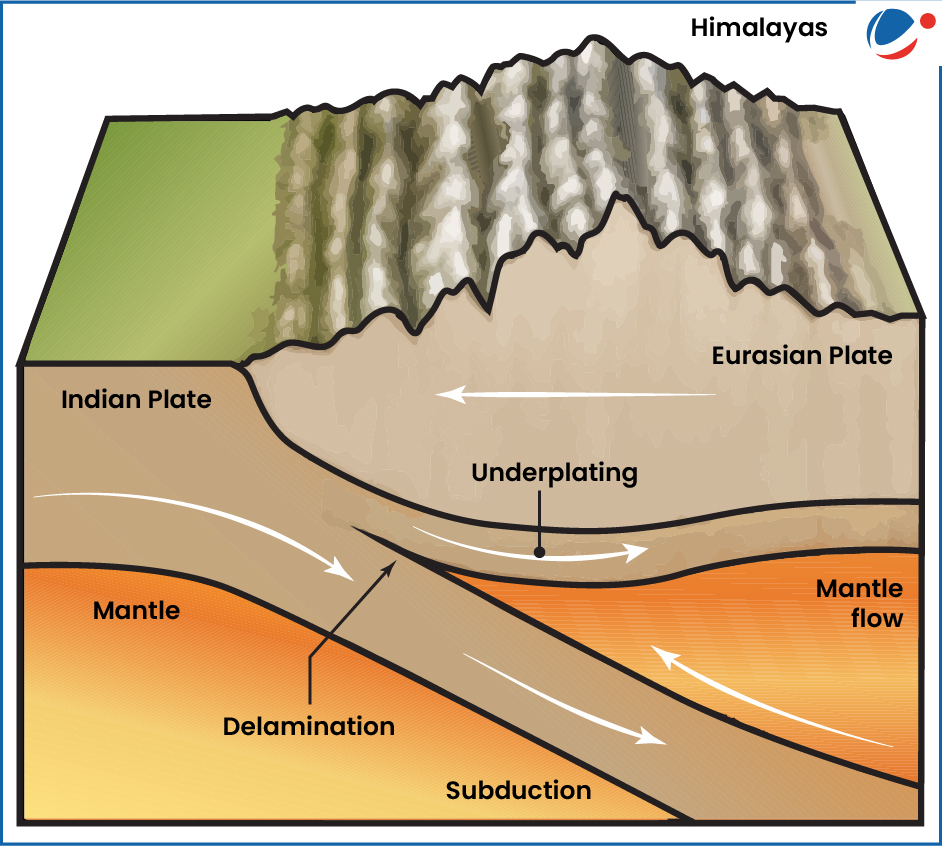Indian Continental Plate is a major tectonic plate bordered by four major plates – Eurasian Plate, Arabian Plate, African Plate, and Australian Plate.
Movement of Indian Plate

Indian Continental Plate, which started moving northward about 60 million years ago, continues to converge with the Eurasian plate, leading to emergence of Tibetan Plateau and the Himalaya mountains.
- Traditionally, two theories describe the emergence of Tibetan Plateau and Himalayan Mountains.
- Underplating: As the Indian plate converges with the Eurasian plate, the denser Indian lower crust is forced to slide beneath the less dense Eurasian crust.
- Subduction: Usually, when two tectonic plates collide, the denser one usually slides beneath the other in a phenomenon called subduction.
- However, Continental plates are thick and buoyant unlike the denser ocean plates, and do not easily subduct into the mantle during collisions.
- Recently, new research proposed a third theory that Indian plate might be undergoing delamination and splitting apart as it slides beneath the Eurasian plate.
- Delamination happens when a plate’s dense lower section peels away and sinks deeper into Earth's hot mantle.



